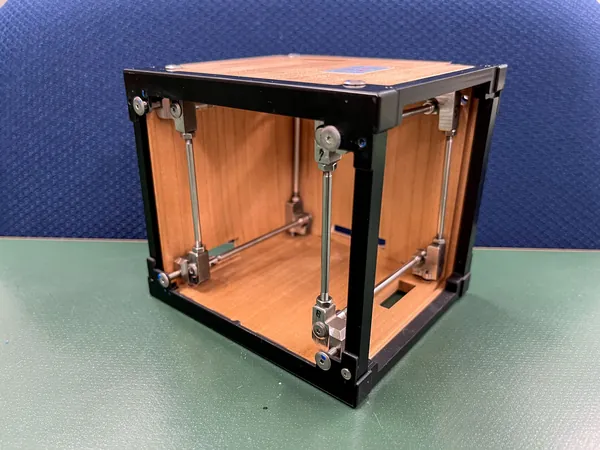
JAXA's Groundbreaking Wooden Satellite Launches from Space Station: A New Era in Spacecraft Design?
2025-01-08
Author: Jacques
In a remarkable feat for sustainability in space exploration, the Japanese Aerospace Exploration Agency (JAXA) successfully deployed its first wooden satellite, LignoSat, along with four other CubeSats, from the International Space Station in December 2024. This innovative satellite aims to explore the viability of using wood as a material for spacecraft, a move that could revolutionize the design of future satellites.
LignoSat is the result of extensive research and experimentation, including a previous study where three different species of wood were exposed to the harsh conditions of outer space. This investigation was crucial for identifying the most suitable wood type for use in space. Ultimately, the final design for LignoSat featured panels made of honoki magnolia wood, each measuring 10 cm and painstakingly assembled using traditional Japanese wood-joinery techniques.
The implications of this groundbreaking project are immense. Utilizing renewable materials like wood could pave the way for more sustainable and eco-friendly satellite designs, potentially reducing the environmental impact of space missions. As concerns about space debris and sustainable practices in aerospace grow, LignoSat represents a significant step towards greener technology in space exploration.
Experts are eagerly watching the satellite's performance as it orbits Earth. The data collected from this experiment could not only provide insights into the durability of wood in space but also influence future innovations in materials science. Could this be the future of satellite technology? Stay tuned as we follow LignoSat's journey beyond our planet!









 Brasil (PT)
Brasil (PT)
 Canada (EN)
Canada (EN)
 Chile (ES)
Chile (ES)
 Česko (CS)
Česko (CS)
 대한민국 (KO)
대한민국 (KO)
 España (ES)
España (ES)
 France (FR)
France (FR)
 Hong Kong (EN)
Hong Kong (EN)
 Italia (IT)
Italia (IT)
 日本 (JA)
日本 (JA)
 Magyarország (HU)
Magyarország (HU)
 Norge (NO)
Norge (NO)
 Polska (PL)
Polska (PL)
 Schweiz (DE)
Schweiz (DE)
 Singapore (EN)
Singapore (EN)
 Sverige (SV)
Sverige (SV)
 Suomi (FI)
Suomi (FI)
 Türkiye (TR)
Türkiye (TR)
 الإمارات العربية المتحدة (AR)
الإمارات العربية المتحدة (AR)